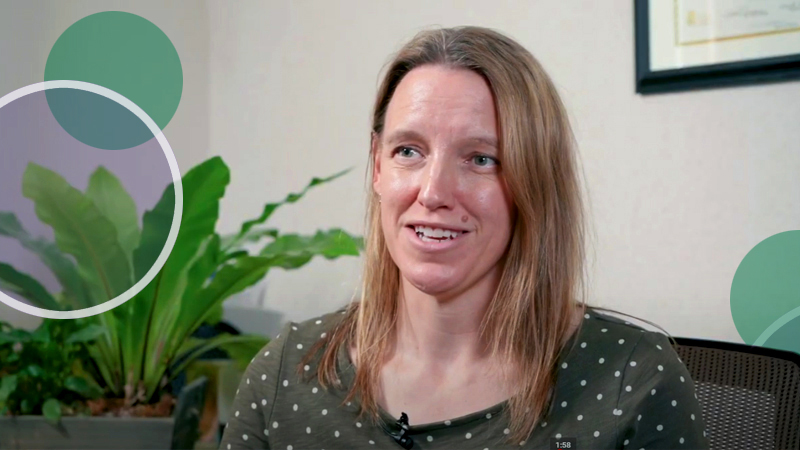
A couple of weeks ago I published a post on LinkedIn that seemed to strike a chord with my followers. It wasn’t just the topic. We all know that the healthcare industry as a whole has been struggling with the issue of clinician burnout for at least a decade. It was my 5-point list of recommendations that seemed to resonate with people.
The comments on the post were just the tip of the iceberg. Below the surface and out of view, I received dozens of private messages and emails. Here’s my post, along with a few follow-up observations. If you like it (or even if you don’t) please connect with me on LinkedIn and share your own perspective.
As someone who has experienced provider burnout firsthand, I understand the gravity of this issue all too well. In the healthcare industry, medical provider burnout occurs silently, often unidentified until it reaches critical levels. What makes it particularly insidious is that the medical provider may not even realize they're experiencing burnout until it's too late. It's an issue that demands our attention and immediate action.
In this post, I highlight five essential elements to help prevent or reduce provider burnout and its impact. This has been a very personal journey, and I hope to shed light on this important issue.
- Listen Without Judgment: Building a culture of open communication is paramount. By actively listening to their concerns and experiences, we create a supportive environment where individuals feel empowered to seek help when needed.
- Provide the Tools Needed for Success: Equipping medical providers with the necessary resources is crucial for their well-being. From innovative technologies to streamline administrative processes, investing in solutions that alleviate burdens and enhance efficiency can significantly mitigate burnout.
- Educate on Solutions: It's not just about providing tools; it's about educating on how to use them effectively. Comprehensive training and ongoing support ensure that medical providers feel confident in navigating challenges and maximizing the benefits of available resources.
- Encourage Outlets Beyond Work: Recognizing the importance of work-life balance is essential. Encouraging medical providers to prioritize self-care and explore hobbies outside of work serves as a vital outlet for stress relief and rejuvenation.
- Establish a Supportive Organizational Culture: Lastly, fostering a culture that prioritizes the well-being of medical providers is fundamental. By promoting values of compassion, teamwork, and mutual respect, we create an environment where individuals feel valued, supported, and inspired to fulfill their professional duties.
In conclusion, medical provider burnout is a complex issue that requires a multifaceted approach. By implementing these five elements, we can create a healthier and more sustainable work environment for our medical providers. Let's unite in our efforts to combat burnout and ensure the well-being of our healthcare workforce. Together, we can make a difference.

About the photos
Top Left: At first glance, this photo may seem to show obvious provider burnout, but it's just me and the dog taking time to rejuvenate after a day of activity.
Bottom Left: Capturing the reality of provider burnout. It portrays the all-too-common practice of bringing work home, blurring the boundaries between professional and personal life. This is something I learned the hard way. The resources now available with cloud-based solutions can be a blessing and a curse. There is nothing wrong with working from home or on vacation, which I continue to do to limit the workload when returning to the office. But there needs to be balance and limitations set to protect your time. The overwhelming nature of the workload can begin to take a toll on mental and emotional well-being if not consciously considered.
Bottom Right: Reveals the internal struggle of provider burnout. This photo probably best represents the peak of burn-out for me. The inner turmoil highlights the disconnect between outward appearances and inner experiences. It serves as a reminder that burnout can often be masked with a smile. During this time, my wife was my rock that I could lean on for the communication and support I needed.
Upper Right: Resilience and triumph over burnout. It shows the importance of tools and resources both inside and outside the office, taking a proactive approach to addressing burnout. With the right support and strategies, it's possible to emerge from the depths of burnout stronger than before.
A Few Parting Observations:
After publishing the post and seeing the response, I have a few additional suggestions to share. These were partly derived from the feedback I received and the opportunity I've had to further reflect since the post.
Prioritize the “life” portion of work-life balance
As you can see in my photos, I’m a cyclist. It’s my go-to tool for stress relief. We all have our own ways of relieving work-related stress. I encourage you to literally schedule time for your own stress-relieving activity. Believe me when I say, you’re never “too busy.” Creating this time is the best investment you could ever make for yourself. It’s human nature to cut these activities when we get busy, which is precisely the opposite of what we should be doing. Carve out time each day for whatever activity helps you relieve your own stress, and don’t cancel or defer it. The amount of time is ultimately up to you, but making that time and sticking to it is crucial.
Lead by example
If you’re a leader in your organization, demonstrate that you value your providers and recognize their stress by checking in with them individually. Don’t just tell them in a group setting that they should practice self-care, show them by example that you prioritize work-life balance yourself. If they don’t see others doing it, they won’t feel comfortable doing it themselves. If you’re not in a leadership position yourself, you still have a role to play in the culture of your organization. Work with your colleagues to organize a few at-work or after-work activities. If it is not currently part of your culture to socialize in this way, start small — but get started. For example, at our organization we have begun to have quarterly provider socials. This is a great opportunity to get to know our colleagues outside of the office. I find this enjoyable and appreciate the friendships formed outside the office.
See something, say something
When you notice a provider exhibiting signs of burnout, share your concern with someone. This issue can lead to many problems for not only the individual experiencing burnout, but for a wider range of providers, and it can begin to impact provider retention. If you’re uncomfortable approaching them yourself, speak with someone in leadership. One sign of a positive work culture is the way people look out for one another. It’s possible to help a provider recover from the early stages of burnout, but more difficult the longer and deeper they go without help. As a provider myself, and an IT liaison, I know that there are many ways we can help clinicians handle their workloads more efficiently and effectively. Sometimes this simply involves sitting down with them to observe their workflows in the EHR. Often I can show them tools and shortcuts that can lower their cognitive load and reduce stress, but this can’t happen if I don’t know they need help!
Do you have ideas to share about how to reduce clinician burnout? Please connect with me on LinkedIn and share your suggestions!
See Randy's presentation for the Scottsdale Institute, "The Innovation Advantage: Harnessing Transformative Power to Drive Technology Adoption."

.jpg)


